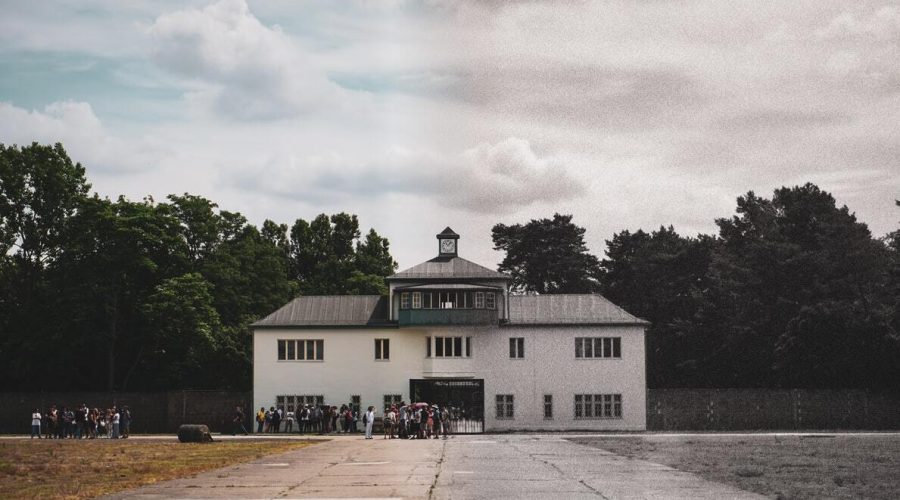What Happened to the Wall of Berlin?
The Berlin Wall was a physical barrier which had served for nearly thirty years as a symbol of the division of the city of Berlin. It served as a physical embodiment of the Cold War and the difference between East and West Germany. But where is the wall today? Let’s dive into its history and see what is left of this great monument.
The Rise and Fall of the Berlin Wall
To comprehend the current location of the Berlin Wall today, one must first consider its creation and its purpose. The wall was built by the German Democratic Republic (GDR) in 1961 to prevent the inhabitants of East Germany, the expatriated population in West Germany, and other Eastern European immigrants from emigrating to West Germany. It was an actual barrier that sliced right through the middle of Berlin, separating families, communities and a people.
Dividing a City
The Berlin Wall stood 156.4 kilometers (97.0 miles) long and was composed of concrete blocks layer, wire with barbs, watchtowers, and an area called the” Death Strip ”. It traveled down streets, parks and even buildings. The wall was not only a physical barrier, but a ideological division between communism and democracy.
The Fall of the Wall
After months of intensifying political opposition and peaceful demonstrations, almost out of the blue but inevitable, the Berlin Wall came tumbling down on November 9, 1989. The reunification of Germany was coming near, and folks from each facet have been celebrating the end of an period. However, the collapse of the wall also presented a logistical difficulty. What should be done with this symbol of apartheid and segregation?
What Happened to the Wall?
Parts of it were immediately torn down by people claiming their freedom after Berlin Wall’s topple. Apprehensive portions_of the wall was kept preserved_in the interests of the historical and mourning purposes. The presence of the wall is still visible today, in numbers of different attractions and sites throughout Berlin.
The East Side Gallery
One of the most known parts of the Berlin Wall is the East Side Gallery. Situated nearby Mühlenstrasse in Friedrichshain, it is outdoor gallery painted with work from artists all around the world. The murals embody hope, freedom and a wish for unity. Documenting the East Side Gallery is one of the best ways to grasp the historical importance of the wall through art.
Checkpoint Charlie
Another famous landmark linked with the Berlin Wall is Checkpoint Charlie. Historically, this checkpoint in between East and West Berlin was a passageway for diplomats, army personnel and international visitors during the Cold War. Today, upon the site of the historic guard station stands a replica of it, now a tourist attraction, with actor milexpressing the military police. It gives a glimpse into the tense climate at one time enveloped this border crossing.
The Berlin Wall Memorial
The Berlin Wall Memorial at Bernauer Strasse is a highly detailed site committed to the history and remembrance of the Wall. It was created with an original part of the wall, a visitor center, a memorial chapel, and an exhibition about the people who lived and died on the wall, located within the wall. The memorial represents the division and the fight for freedom and encapsulates a place to glance out at the past.
The Wall’s Legacy
Even though the Berlin Wall has physically crumbled, its influence still defines the city and the world. The reunification of Germany brought a welcome shift, but memories of the split still smart. The wall stands as a solemn reminder of consequences of ideologies and robustness of human spirit. It also serves as a symbol of hope, unity, of freedom and ultimately of the search for freedom.
The Fragments of History
In addition to those conserved parts of the Berlin Wall, bits of it can be seen in multiple places throughout Berlin, as well as globally. These fragments keep alive the importance of the wall and are frequently found in museums, public spaces and personal collections. They offer enterprise to travel through the layers of history and the huge consequences of the wall on people’s lives.
In Conclusion
What was once a symbol of division is now a symbol of unity, international understanding. Those preserved chunks, and symbolic bits, sites, of the wall educate and keep in mind to us, and that we never forget what is gleaned. Knowing the background of the Berlin Wall makes it easier for us to appreciate the progress of an ever more interconnected and unified world.
Table of Contents



